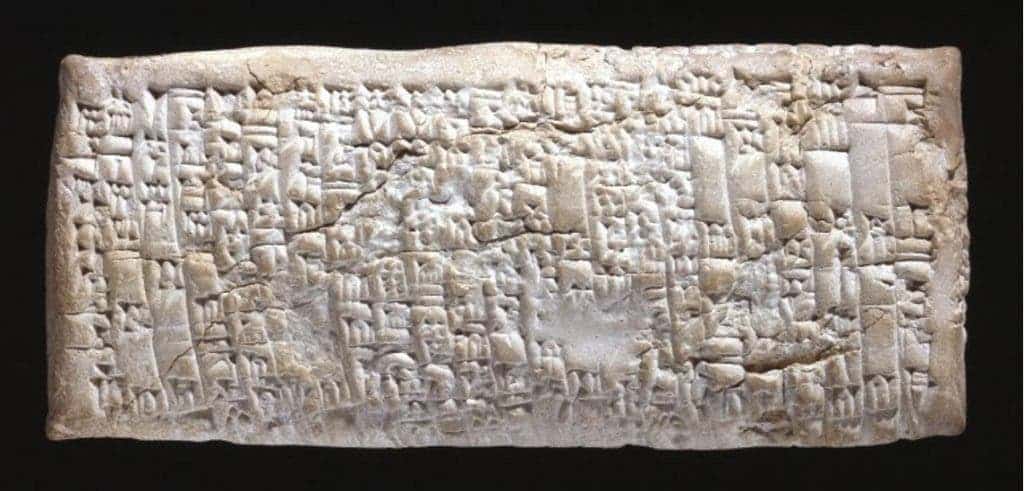The ancient Babylonians were the most advanced culture of their times, having mastered geometry, agriculture and high rise buildings. Experience tells us that no great state or city was built without a solid trade backbone – the oldest complaint letter in the world is revealing in this respect. It tells the story of a disappointed Babylonian customer who was shipped low-quality copper ore.
The letter, written in cuneiform on a clay tablet, is nuanced with very detailed accounts of the trade, but also threats of ceasing business relations. Not all that different from the complaint e-mails we send nowadays when we’re serviced badly.

The letter dated to 1750 B.C.E. is tucked away at the British Museum. It was authored by an unsatisfied copper ore customer named Nanni, asking for his money back from the supplier, Ea-nasir. The tablet seems to be only one of a series of back-and-forth correspondences the two had. Judging from this letter alone, it seems like Nanni was right to voice his complaint, though Ea-nasir’s account might make us switch sides if only archaeologists were to discover more tablets. This one was discovered in Ur, now in modern day Iraq, which was probably the most important city-state in ancient Mesopotamia in the third millennium B.C.E.
Here’s the translated letter:
“Tell Ea-nasir: Nanni sends the following message:
When you came, you said to me as follows : “I will give Gimil-Sin (when he comes) fine quality copper ingots.” You left then but you did not do what you promised me. You put ingots which were not good before my messenger (Sit-Sin) and said: “If you want to take them, take them; if you do not want to take them, go away!”
What do you take me for, that you treat somebody like me with such contempt? I have sent as messengers gentlemen like ourselves to collect the bag with my money (deposited with you) but you have treated me with contempt by sending them back to me empty-handed several times, and that through enemy territory. Is there anyone among the merchants who trade with Telmun who has treated me in this way? You alone treat my messenger with contempt!On account of that one (trifling) mina of silver which I owe(?) you, you feel free to speak in such a way, while I have given to the palace on your behalf 1,080 pounds of copper, and umi-abum has likewise given 1,080 pounds of copper, apart from what we both have had written on a sealed tablet to be kept in the temple of Samas.
How have you treated me for that copper? You have withheld my money bag from me in enemy territory; it is now up to you to restore (my money) to me in full.
Take cognizance that (from now on) I will not accept here any copper from you that is not of fine quality. I shall (from now on) select and take the ingots individually in my own yard, and I shall exercise against you my right of rejection because you have treated me with contempt.”
About 30 years earlier, one of the most renowned kings of Mesopotamia, Hammurabi, had promulgated one of the earliest known set of laws — the Code of Hammurabi. The laws protected a sophisticated state whose inhabitants were versed in astronomy, mathematics and infrastructure works. Many technologies were also invented around this time like glass and lamp-making, irrigation, water storage and flood control, textile weaving and metal working. It was in metal working that Nanni was interested to use the copper ore, most likely. Babylonians would use the copper and tin to make bronze, a prized alloy.
Then and now, consumer expected an honest appraisal of the product, value for their money, and functionality. Though not all that different from hate e-mails we send today, Nanni really meant it. A complaint can be written in under a minute today. But almost 4,000 years ago, Nanni had to patiently etch cuneiform characters in a clay tablet, then fire it in an oven, before finally having it sent with a courier to the letter’s recipient.
The BAS Library reports that there are close to half a million cuneiform tablets in the world’s museums, but only 30,000 to 100,000 have been translated. Progress is slow since there are maybe only a hundred certified cuneiform translators in the world. Who knows what we’ll learn next about Mesopotamian life.


